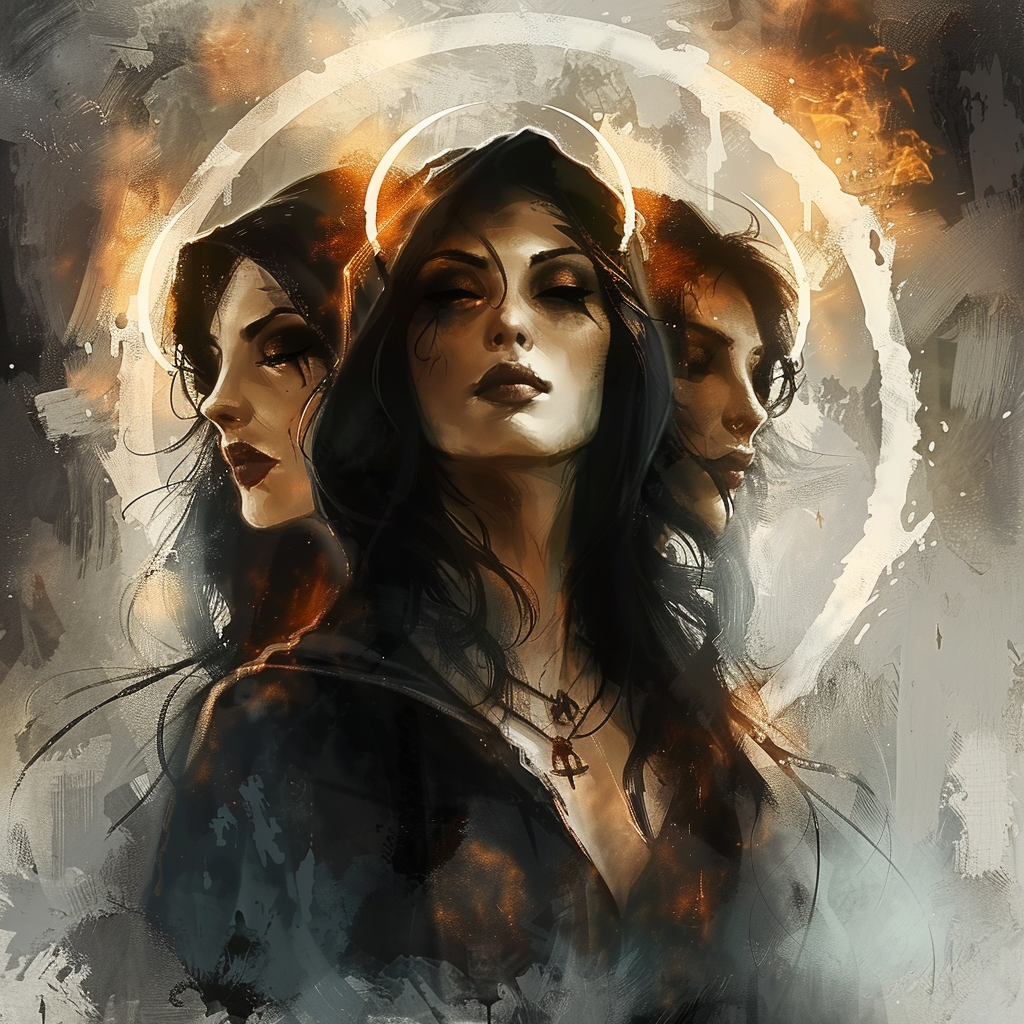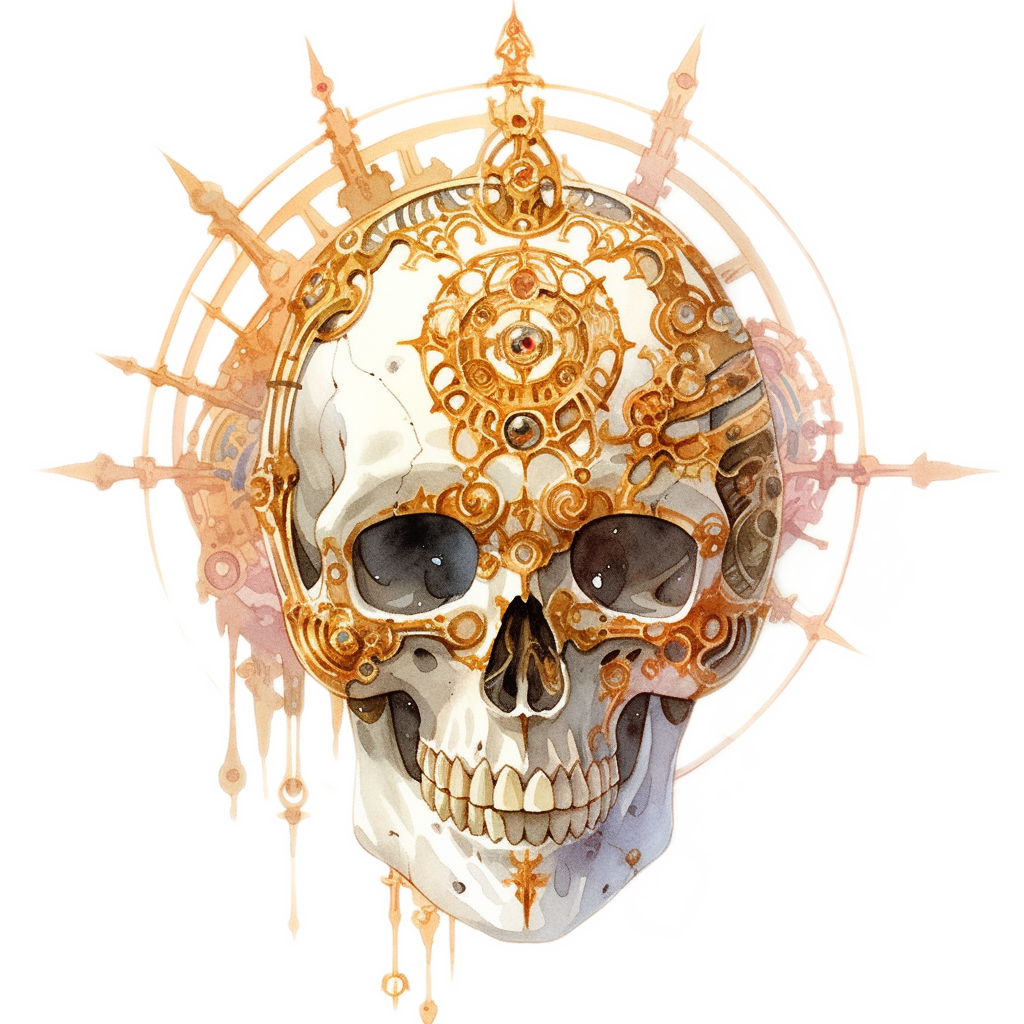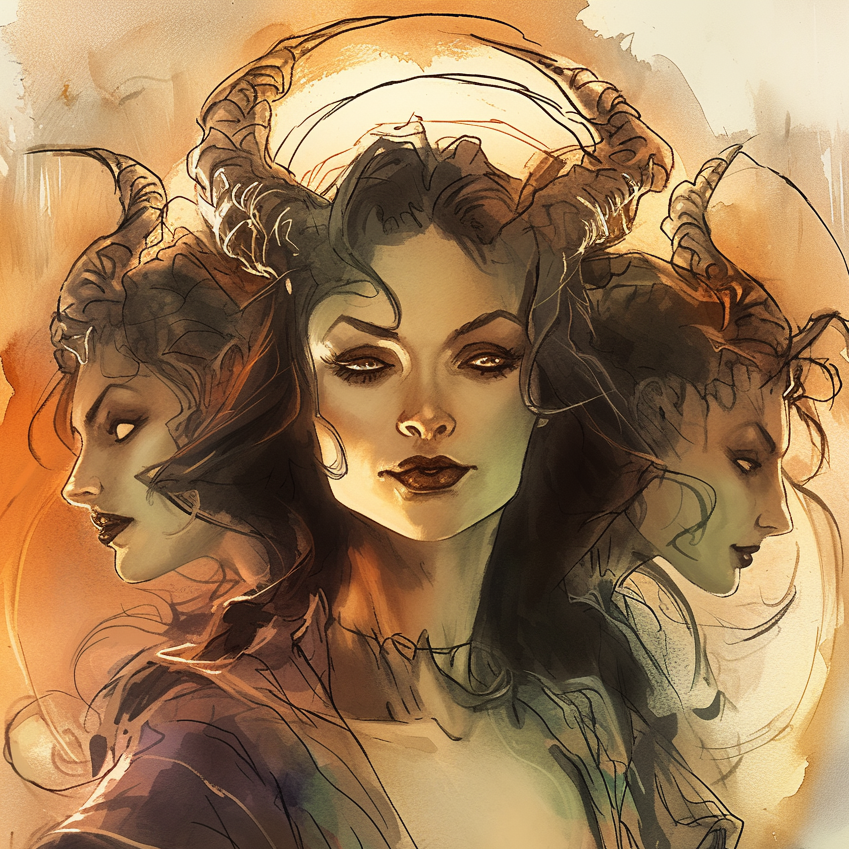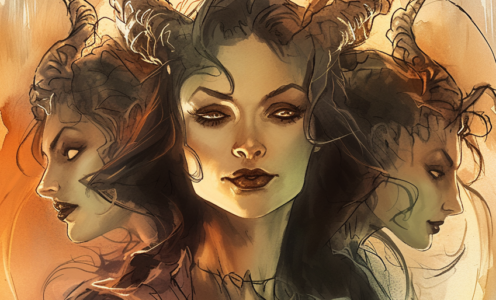Hecate

Trivia. CE(N) intermediate power of magic, witchcraft, necromancy, abundance (She/Her)
Pantheon: Greek
Symbol: A setting moon, a three-faced woman
Realm: Baator / Minauros / Aeaea and Gray Waste / Pluton / Aeaea
Known Proxies: Circe (proxy human transmuter [she/her] / CE)
Daughter of the titan Perses and the goddess Asteria, Hecate is cousin both to Zeus, and his twin children Apollo and Artemis. Though technically counted among the titans, she was not stripped of her powers at the end of the Titanomachy, though history is silent as to the reasons for this. Her true form is that of a woman with three heads, but she will often appear in various guises and at various ages: maiden, mother, and crone. She is often depicted with flaming torches in her hands. Her house is in the Underworld, where she acts as minister to its queen, Persephone, and is held in great honour there. She travels frequently however, and is known as the “Kluchoeophoros” (“Key-Bearer”) due to her facility in traversing the realms. Elegant and eloquent in equal measure, her advice is often sought by other gods, but rarely given without price.
Hecate is the goddess of magic, particularly witchcraft, where power comes from dealings with inscrutable forces beyond mortal comprehension. She is patroness of the creatures of the night, the dark side of the moon, and of those who commune with the spirits of the dead. More generally, Hecate is a goddess of boundaries and intersections—crossroads are especially sacred to her.
Hecate’s multifaceted form reflects her ambiguous and varied nature. To those she favours she is a source of great power and beneficence: a nurturer of talent, a bringer of wealth, a protectress in the dark, and a counsellor in all undertakings. She takes particular satisfaction in bestowing power and agency on women, and on those who would otherwise be disenfranchised by society. To those who anger her however, or indeed merely those who fail to find her favour, she is a being of insidious terror. As queen of restless spirits, she roams the earth at night, accompanied by spectral hounds and a retinue of the ghosts of women wronged in life. Mortals she finds in her wanderings are rarely left unscathed. She is also the patroness of poisons and poisoners. Always looking to the long term, Hecate has no qualms about the spilling of blood, but like a good reaper will endeavour to leave at least a few saplings or fauns for the sake of next year’s harvest.
Embodying as she does a sense of cosmic ambivalence, Hecate’s followers often demonstrate a readiness to cast aside moral restrictions or societal norms for the sake of their ultimate objectives. She rewards effective action, whether that be the result of long-term scheming or the seizing of a rare opportunity. She teaches that knowledge is power, whatever its source, and that both should be coveted. She encourages her followers to be acquisitive, especially of magical power, but not to be wasteful.
Clergy, Temples, and Worship
Despite her more disturbing attributes (and sometimes, perhaps, on their account), Hecate is widely worshipped by mortals. Her clergy are usually clad in robes of blue, black, and white. They are sought out for many reasons: to officiate at funerals or memorials, for magical instruction, or for exorcising unwanted spirits. They may be found blessing crops or babies as frequently as they are calling down curses. Like most other gods, Hecate demands regular sacrifice, most commonly in the form of cakes adorned with many candles. On occasions in which she requires more fervent placation however, she has been known to demand the sacrifice of puppies.
Hecate’s temples are usually located outside city boundaries, and are often the site of elaborate tombs and memorials for the dead. Libraries in Hecate’s temples tend to be smaller and more specific than those of other gods such as Apollo or Hermes, focussing on tomes of magical instruction rather than general knowledge. They also often serve as repositories for magical artifacts. As well as the expected cult statues of Hecate in her triple form, public worship spaces in her temples often contain large, round tables inscribed with mystical symbols.
As well as public temples, smaller shrines to Hecate are common at crossroads or at the boundaries between lands. Hidden sanctuaries to the goddess may be found in haunted forests or other places of darkness, sometimes guarded by her undead minions. Such places tend not to be welcoming of unwary visitors.
Source: Aaron Masters and Jon Winter-Holt



